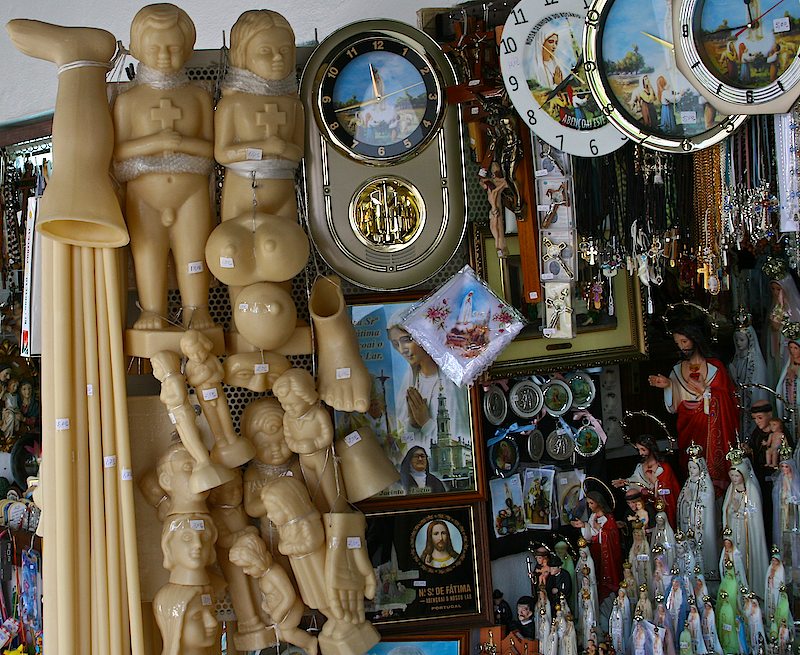
I hadn’t looked in on the Cosimanian Orthodox gloomster The Ochlophobist in ages, and so enjoyed it that I made a note to bookmark his site. I also found there links to the blog of one Arturo Vasquez, a Catholic who makes pithy, wise, pessmistic observations. Such as this one, which I offer for discussion:
Any tradition that you read in a book is not a tradition. Tradition is passed down through life, not learning. The entire Bugninian project of the liturgy was an attempt to create a tradition by the book. Even if it sought to reintroduce certain ceremonies or accoutrements into the liturgy that had died out several centuries earlier, all it did was create novelty with the thin veneer of antiquity. All of this has nothing to do with tradition. Once a tradition is dead, it’s dead. Otherwise, you are just playacting.
…
Just because something is broken doesn’t necessarily mean that there is someone around smart enough to fix it. This is basically the dilemma of Catholicism of the 21st century, if not the perennial dilemma of humanity.
….
Roman Catholicism at this point has painted itself into a corner from which, in my eyes, it can only escape by jettisoning much of the metaphysical apparatus upholding the modern concept of “Christianity”. In other words, it has to become “pagan”, full stop. On the one hand, textual scholarship, modern science, and a general lack of coercive power have made any historical arguments for Catholic faith and practice insufficient. On the other hand, the only attempts to justify Christianity from the Catholic perspective have either centered on “personalist” dialogue with these sources (under which man’s aspirations are fulfilled by a personal “Other), or through reactionary fundamentalism against anything deemed “threatening to the Faith” (which is why Pio Nono never got invited to any parties).
The way out has often been proposed as keeping the spirit but discarding the letter; neglecting the sign but holding fast to the meaning. I say we stand this on its head: keep the sign, but reinterpret the meaning. Or rather, try to find the transcendental in the immediate, imperfect tradition, rather than try to construct the true liturgy/church/philosophy whole cloth. In other words, let us have a rebellion against ecclesiastical Cartesianism.
Because if we are blind to the truths in the symbols immediately before us, chances are that there is nothing wrong with them, but rather something wrong with us.
I wondered what he means by Catholic Christianity needing to become “pagan, full stop” — and then I found this passage from a Vasquez post about Church governance:
The driving idea behind my intellectual projects, however, is a postmodern agnosticism towards attempts by any institution (divinely instituted or not) to hem in the limits of the enchanted world. Intellectually, I suppose, these reservations are due in large part to my studies of Neoplatonism, particularly of Marsilio Ficino. This is where a lot of my perennialism and admiration for folk religion comes in, as well as my profound distrust of theological abstraction. Since the human intellect is the lowest form of immaterial existence, and since our knowledge of the material world is constantly evolving, I am beginning to think that entering into the realm of religiosity is not an invitation to blissful certainty, but is rather more like being tossed into a lion’s den with forces that we barely understand. One can of course try to keep on the “straight and narrow” of “official” sacramental Christianity, but I have never found that road to be as clear cut as most would like to think. In the end, we may be living in a world haunted by gobblins and witches, where the evil eye is very much a problem that we are sedating with modern drugs, and where Santa Muerte is coming to get you (though she is really your friend). Though we would still need to walk by faith and not by sight, what we can see is much more than we think is out there.
The good news is that there are helpers, but those helpers are often not found in high offices or fancy robes. They are the Virgin Mary, the saints, las ánimas del Purgatorio who sometimes are let out to wander the earth, the angels, and heck, Santa Muerte herself if you believe in that sort of thing. They may not work with the bureaucratic efficiency that we often desire, but they do work. And there is of course wonder. But that wonder is the result of this existential gamble we call our lives, and here certainty is often not in the cards. But it does, at the same time, make life worth living, and living well.
I think I know what he means. I must confess that the older I get, the more I believe that the kind of lurid Christianity — weeping icons, gaudy statues, bloody plaster Christs drooping from crucifixes, candles inside cheap, colored glass sheaths bought at the supermercado — is closer to the Real Thing than the abstractions of the theologians. I once stood in front of a large fire in the plaza outside the basilica at Fatima, Portugal, and watched as throngs of worshipers burned wax shaped like body limbs in the flames, as prayers for healing. It was the most pagan religious ceremony I’d ever seen, and you would sooner see goats sacrificed on the lawn of Our Lady of Nordstrom’s than such a thing in these United States. But it was scary and gorgeous and raw. I loved it, and I hated it. But I wasn’t indifferent to it. Mostly, I found it mesmerizing. This photo above is of souvenirs on sale in a shop in Fatima. The candle-looking objects are things you buy to throw on the fire. When you are there, you are very, very far from Our Lady of Nordstrom’s.
